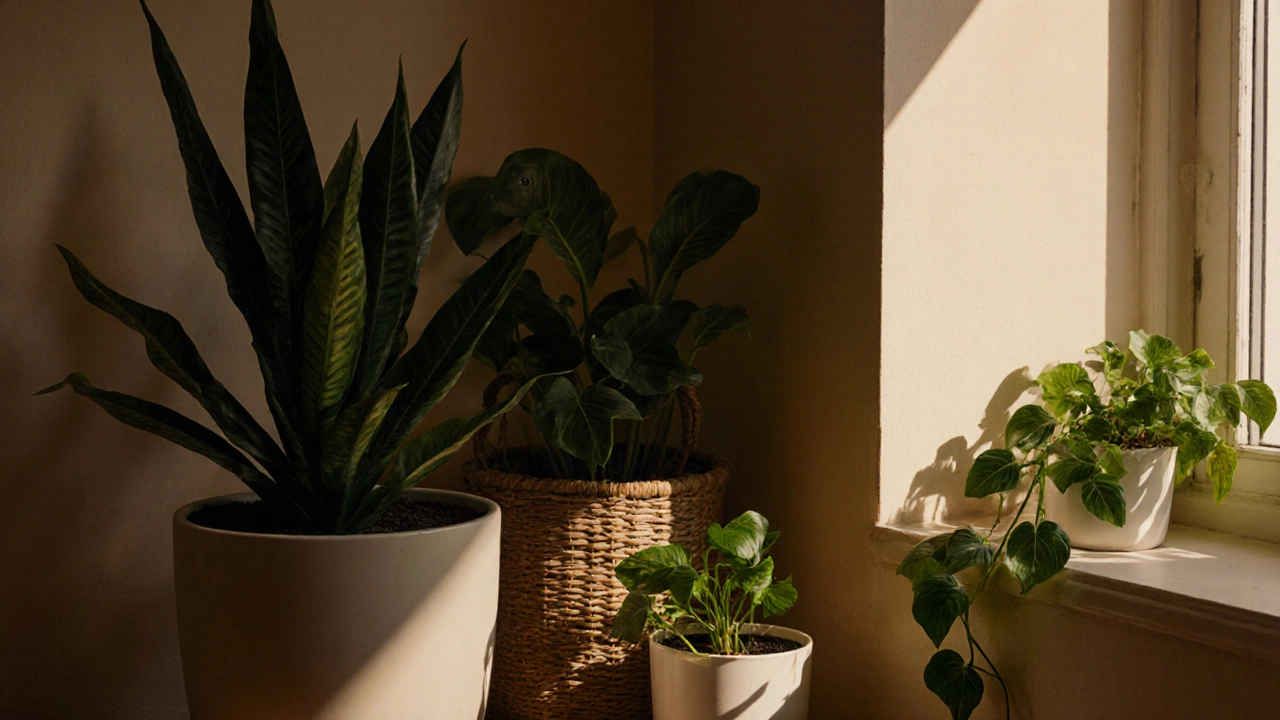Best easiest houseplant Options for Every Home
When talking about easiest houseplant, a plant that thrives with minimal care, tolerates low light, and forgives occasional neglect. Also known as low‑maintenance indoor plant, it is perfect for anyone who wants green without a gardening degree. The easiest houseplant often falls into the category of low light plant, a species that can survive in dim corners and indirect sunlight, air purifying plant, a plant that improves indoor air quality by filtering toxins and succulent, a water‑saving plant with thick leaves that stores moisture. These three groups intersect: a succulent can be a low‑light plant and an air purifier at the same time, making it a prime example of an easiest houseplant.
Why do beginners gravitate toward these plants? First, low‑light tolerance means you don’t need a sunny windowsill, so the plant adapts to most indoor spots (low light plant ➜ easiest houseplant). Second, air‑purifying capability adds a health perk without extra effort (air purifying plant ➜ easiest houseplant). Third, succulents need watering only when the soil is dry, cutting the risk of over‑watering (succulent ➜ easiest houseplant). Together, these traits satisfy the semantic triple: Easiest houseplant encompasses low‑light tolerance, air‑purifying benefits, and minimal watering needs.
Choosing the right plant starts with assessing your space. If your room receives less than three hours of direct sun, aim for a snake plant (Sansevieria) or a ZZ plant (Zamioculcas zamiifolia). Both are classic low‑light plants and excel at removing formaldehyde from the air. For a splash of green that also stores water, opt for a jade plant (Crassula ovata) or an aloe vera—both are succulents that can handle occasional neglect. Remember, the key attribute of an air purifying plant, its ability to filter VOCs like benzene and trichloroethylene is a bonus, not a primary requirement; focus first on light and watering needs.
Watering frequency is the biggest mistake new plant owners make. With succulents, the rule of thumb is "dry soil, then water"—usually every two to three weeks depending on humidity. Low‑light plants like pothos or philodendron prefer their soil to dry out on the surface before the next drink, which translates to watering once a week in most Indian homes. Over‑watering creates root rot, which instantly turns a "easy" plant into a struggle. Using a moisture meter or simply sticking a finger an inch into the soil can give you a reliable cue. This simple habit helps maintain the low maintenance, characteristic of plants that require little daily attention that defines the easiest houseplant category.
Beyond light and water, soil type matters. A well‑draining mix—one part potting soil, one part perlite or coarse sand—prevents water from pooling at the roots. For succulents, add extra sand or cactus mix to increase drainage. Low‑light plants often appreciate a richer compost but still need good airflow; a peat‑based mix works well. Adding a thin layer of mulch, like small stones, not only looks tidy but also helps keep the soil surface from drying out too quickly, which benefits both low‑light and succulent varieties. These practical steps keep the plant’s growth steady and reduce the need for frequent interventions.
Another hidden advantage of the easiest houseplant selection is pest resistance. Plants that thrive on neglect, such as pothos or spider plants, tend to attract fewer spider mites and mealybugs because they are not constantly stressed by over‑watering or extreme light shifts. When pests do appear, a quick wipe with a damp cloth or a gentle neem‑oil spray usually solves the issue without harming the plant. This resilience reinforces the semantic connection: low maintenance plants reduce pest problems, which in turn keeps the overall care level low—a core benefit for beginners.
In short, the easiest houseplant combines three strengths: tolerance to low light, ability to purify indoor air, and a minimal watering schedule. Whether you pick a hardy snake plant, a glossy pothos, or a water‑wise jade succulent, each choice brings a low‑maintenance boost to your space. Below you’ll find articles that dive deeper into specific species, step‑by‑step care routines, and troubleshooting tips, so you can start your indoor‑green journey with confidence.
Easiest Houseplant to Keep Alive: Beginner‑Friendly Options
Discover the most forgiving houseplants, learn simple care steps, and avoid common pitfalls. Perfect for beginners who want a thriving indoor garden.
- manufacturing
- India
- food processing
- garden tips
- rice cultivation
- government schemes
- balcony garden
- urban gardening
- balcony gardening
- profitable business
- business ideas
- plastic manufacturing
- drip irrigation
- plant care
- steel manufacturing
- sustainable gardening
- startup ideas
- steel industry
- flower gardening
- textile manufacturers






